Trends in Structure and Thermodynamic Properties of Normal Rare Earth Carbonates and Rare Earth Hydroxycarbonates
Abstract
:1. Introduction
2. Synthesis
2.1. Conversion
2.2. Decomposition
2.3. Precipitation
3. Trends in the Properties of the Rare Earth Carbonates
3.1. Crystallography of the Rare Earth Carbonates
3.2. Thermochemical Properties of the Rare Earth Carbonates
3.3. Thermal Behavior of the Rare Earth Carbonates
- (1)
- Decreasing carbonate product crystallinity (lack of distinct plateaus in decomposition profiles) with increasing atomic number, with the relatively high heating rate (~ 20 °C/min), makes decomposition transition temperature difficult to identify.
- (2)
- Dehydration of the hydroxycarbonates, due to their greater amorphous nature, occurs at much lower temperatures than those of the lighter hydroxycarbonates.
- (3)
- Within the lighter hydroxycarbonates (La-Eu), the temperature at which the partial decarbonation to form an oxycarbonate occurs trends downwards with increasing atomic number.
- (4)
- Oxycarbonate decomposition temperature trends downwards with increasing atomic number, which was also found for the oxycarbonates of the hydrated normal carbonates.
3.4. Behavior of Rare Earth Carbonates in Aqueous Environments
4. Final Remarks
Acknowledgments
Conflicts of Interest
References
- Critical Materials Institute (CMI). Critical Materials Institute—Grand Challenge Problems; CMI: Ames, IA, USA, 2014. [Google Scholar]
- Gschneidner, K.A., Jr. The Rare Earth Crisis—The Supply/Demand Situation for 2010–2015. Mater. Matters 2011, 6, 32–37. [Google Scholar]
- Connelly, N.G.; Damhus, T.; Hartshorn, R.M.; Hutton, A.T. Nomenclature of Inorganic Chemistry—IUPAC Recommendations 2005; Division of Chemical Nomenclature and Structure Respresentation; RSC Publishing: London, UK, 2005. [Google Scholar]
- Emsley, J. Nature’s Building Blocks: An A-Z Guide to the Elements; Oxford University Press: Oxford, UK, 2011. [Google Scholar]
- Haxel, G.B.; Hedrick, J.B.; Orris, G. Rare Earth Elements—Critical Resources for High Technology; United States Geological Survey: Reston, VA, USA, 2002.
- Railsback, L.B. Patterns in the Compositions, Properties, and Geochemistry of Carbonate Minerals. Carbonates Evaporites 1999, 14, 1–20. [Google Scholar] [CrossRef]
- Castor, S.B. The Mountain Pass rare-earth carbonatite and associated ultrapotassic rocks, California. Can. Mineral. 2008, 46, 779–806. [Google Scholar] [CrossRef]
- Le Bas, M.J.; Kellere, J.; Kejie, T.; Wall, F.; William, C.T.; Peishan, Z. Carbonatite dykes at bayan Obo, inner Mongolia, China. Mineral. Petrol. 1992, 46, 195–228. [Google Scholar] [CrossRef]
- Zhou, Z.; Gongyuan, L.; Tongyun, S.; Yuguan, L. On the geological characteristics and the genesis of the dolomitic carbonatites at Bayan Obo, Inner Mongolia. Geol. Rev. 1980, 26, 35–42. [Google Scholar]
- U.S. Geological Survey. Mineral Commodities Summary 2011; United States Geological Survey: Reston, VA, USA, 2011.
- U.S. Geological Survey. Mineral Commodity Summaries 2012; United States Geological Survey: Reston, VA, USA, 2012.
- U.S. Geological Survey. Mineral Commodities Summaries 2015—Rare Earths. Earth; United States Geological Survey: Reston, VA, USA, 2015.
- U.S. Geological Survey. Mineral Commodity Summaries 2016. Mineral Commodity Summaries; United States Geological Survey: Reston, VA, USA, 2016.
- Hurst, C. China’s Rare Earth Elements Industry: What Can the West Learn? Institute for the Analysis of Global Security: Washington, DC, USA, 2010. [Google Scholar]
- Gupta, C.K.; Krishnamurthy, N. Extractive Metallurgy of Rare Earths; CRC Press LLC: Boca Raton, FL, USA, 2004. [Google Scholar]
- Carroll, S.A. Precipitation of Nd-Ca carbonate solid solution at 25 °C. Geochim. Cosmochim. Acta 1993, 57, 3383–3393. [Google Scholar] [CrossRef]
- Meinrath, G.; Takeishi, H. Solid-liquid equilibria of Nd3+ in carbonate solutions. J. Alloys Compd. 1993, 194, 93–99. [Google Scholar] [CrossRef]
- Meinrath, G.; Kim, J.I. Solubility products of different Am (III) and Nd (III) carbonates. Eur. J. Solid State Inorg. Chem. 1991, 28, 383–388. [Google Scholar]
- Runde, W.; Meinrath, G.; Kim, J.I. A Study of Solid-Liquid Phase-Equilibria of Trivalent Lanthanide and Actinide Ions in Carbonate Systems. Radiochim. Acta 1992, 58–59, 93–100. [Google Scholar] [CrossRef]
- Zhao, D.; Pan, X. Precipitation of Rare Earth with Carbonic Acid. CN Patent 1055395a, 16 October 1991. [Google Scholar]
- Yu, Q.; Li, X. Formation of crystalline rare earth carbonates from ore leaching liquors. Zhongguo Xitu Xuebao 1993, 11, 171–173. [Google Scholar]
- Vladescu, C.M.; Iusein, G. Separation of cerium from trivalent lanthanides. Italian patent RO 86901, 29 June 1985. [Google Scholar]
- Tselik, I.N.; Shvartsman, V.Y.; Fedorenko, V.D. Composition and thermal stability of carbonates of yttrium group rare earth elements. Zhurnal Neorganicheskoi Khimii 1968, 13, 106–112. [Google Scholar]
- Tong, Z.; Chen, W.; Guan, X. Manufacture of Rare Earth Carbonates from Rare Earth Sulfates. CN Patent CN1094380A, 2 November 1994. [Google Scholar]
- Schmitt, A.; Lorenz, H.; Richter, H.; Kunze, G. Discontinuous process for the precipitation of rare earth carbonates from aqueous solutions containing other anions and cations. DE patent, DD292216, 25 July 1991. [Google Scholar]
- Osipova, T.P.; Kharakoz, A.E.; Bleshinskii, S.V. Composition of precipitates obtained during the reaction of sodium carbonate with the salts of rare earth elements. Fiz.-Khim. Issled. Redkozemel. Elem. 1972, 52–60. [Google Scholar]
- Osipova, T.P.; Bleshinskii, S.V.; Kharakoz, A.E. Sodium carbonate as a reagent for the precipitation of rare earth elements. In Khim. Svoistva Soedin. Redkozemel. Elem.; Nauka: Moscow, Russia, 1973. [Google Scholar]
- Liu, S.; Ma, R. Preparation by crystalline precipitation of mixed rare earth carbonates. Zhongguo Youse Jinshu Xuebao 1998, 8, 331–334. [Google Scholar]
- Li, Y.; Li, M.; He, X.; Hu, P.; Gu, Z. Precipitation and crystallization of rare earth carbonate. Zhongguo Youse Jinshu Xuebao 1999, 9, 165–170. [Google Scholar]
- He, L.; Gu, Z. Carbonate in Separation of Mixed Rare Earth Metals. CN Patent 1054269A, 4 September 1991. [Google Scholar]
- He, D.; Liao, L.; Xu, R. Precipitation of Rare Earths with a Mixed Precipitant. CN Patent CN1033976A, 19 July 1989. [Google Scholar]
- Fischer, W.; Muller, J.; Niemann, K.E. Separation of the rare earths by fractional precipitation of their carbonates. Z. Anorgan. Allg. Chem. 1955, 282, 63–79. [Google Scholar] [CrossRef]
- Da Silva Queiroz, C.A.; Abrao, A. Behavior of rare earth (La, Ce, Pr, Nd, Sm) carbonates in ammonium carbonate and ammonium carbonate/ammonium hydroxide solution. Publ. ACIESP 1993, 89, 187–200. [Google Scholar]
- Sylvester, C. An Elementary Treatise on Chemistry Comprising the Most Important Facts of the Science, with Tables of Decomposition; To Which Is Added, An Appendix, Giving an Account of the Latest Discoveries, 1st ed.; Liverpool: London, UK, 1809. [Google Scholar]
- Reid, H. Popular Treatise on Chemistry. I. Chemistry of Nature; Simpkin, Marshall & Co.: London, UK, 1834. [Google Scholar]
- Roscoe, H.E.; Schorlemmer, C. A Treatise on Chemistry. Volume II.—Metals; Macmillan and Co.: London, UK, 1879. [Google Scholar]
- Treadwell, F.P. Analytical Chemistry Quantitative Analysis; John Wiley & Sons: Hoboken, NJ, USA, 1910. [Google Scholar]
- Blitz, H.; Blitz, W. Laboratory Methods of Inorganic Chemistry; John Wiley & Sons: Hoboken, NJ, USA, 1909. [Google Scholar]
- Fresenius, C.R. Manual of Qualitative Chemical Analysis; John Wiley & Sons: Hoboken, NJ, USA, 1913. [Google Scholar]
- Mochizuki, A.; Nagashima, K.; Wakita, H. The synthesis of crystalline hydrated double carbonates of rare earth elements and sodium. Bull. Chem. Soc. Jpn. 1974, 47, 755–756. [Google Scholar] [CrossRef]
- Fridman, Y.D.; Sorochan, R.I.; Sarbaev, D.S. Solubility of rare earth carbonates in potassium carbonate solutions. Issled. Khim. Redk. Soputstv. Elem. 1966, 175–184. [Google Scholar]
- Tselik, I.N.; Deineka, G.F.; Fedorenko, V.D.; Shvartsman, V.Y. Reaction of rare-earth chlorides with potassium carbonate in solution. Ukrainskiĭ Khimicheskii Zhurnal 1969, 35, 1042–1045. [Google Scholar]
- Kutty, T.R.N.; Viswanathiah, M.N.; Tareen, J.A.K. Hydrothermal equilibria in Nd2O3-H2O-CO2 System. Proc. Indian Acad. Sci. Chem. Sci. 1978, 87, 69–74. [Google Scholar]
- Mohamed, I.; Tareen, J.A.K.; Kutty, T.R.N. Hydrothermal phase equilibria in Er2O3-H2O-CO2 and Tm2O3-H2O-CO2 systems. Proc. Indian Acad. Sci. Chem. Sci. 1984, 93, 785–793. [Google Scholar]
- Kutty, T.R.N.; Mohamed, I.; Tareen, J.A.K. Hydrothermal phase equilibria in Ln2O3-H2O-CO2 systems for Tm, Yb and Lu. Mater. Chem. Phys. 1984, 10, 425–441. [Google Scholar] [CrossRef]
- Tareen, J.A.K.; Kutty, T.R.N. Hydrothermal phase equilibria in Ln2O3-H2-CO2 Systems. J. Cryst. Growth 1980, 50, 527–532. [Google Scholar] [CrossRef]
- Tareen, J.A.K.; Kutty, T.R.N.; Mohamed, I. The Stable Lanthanide Carbonates in the Ln2O3-H2O-CO2 Systems. Indian Mineral. 1980, 21, 43–48. [Google Scholar]
- Trombe, F.; Blaise, M.; Caro, P.E. Sur la solubilite des carbonate d’yttrium, de scandium et de quelques elements du groupe des terres rares dans l’eau charge de gaz carbonique. C. R. Hebdomadaires Seances L’acad. Sci. Sér. C 1966, 263, 521–524. [Google Scholar]
- Caro, P.E.; Lemaitre-Blaise, M. Hydroxycarbonates de terres rares Ln2(CO3)x(OH)2(3-x)·nH2O (Ln = terres rares). C. R. Hebdomadaires Seances L’acad. Sci. Sér. C 1969, 269, 687–690. [Google Scholar]
- Caro, P.; Lemaitre-Blaise, M.; Trombe, F. Identification et solubilites des phase soslides a l’equilibre sous une atmosphere de gaz carbonique dans les systemes temaires oxydes de terres rares-gaz carbon. C. R. Hebdomadaires Seances L’acad. Sci. Sér. C 1968, 267, 1594–1597. [Google Scholar]
- Sprycha, R.; Jablonski, J.; Matijević, E. Zeta potential and surface charge of monodispersed colloidal yttrium(III) oxide and basic carbonate. J. Colloid Interface Sci. 1992, 149, 561–568. [Google Scholar] [CrossRef]
- Zhang, Y.; Han, K.; Cheng, T.; Fang, Z. Synthesis, characterization, and photoluminescence property of LaCO3OH microspheres. Inorg. Chem. 2007, 46, 4713–4717. [Google Scholar] [CrossRef] [PubMed]
- Zhang, Y.; Gao, M.; Han, K.; Fang, Z.; Yin, X.; Xu, Z. Synthesis, characterization and formation mechanism of dumbbell-like YOHCO3 and rod-like Y2(CO3)3·2.5H2O. J. Alloys Compd. 2009, 474, 598–604. [Google Scholar] [CrossRef]
- Li, K.; Zhao, P. Synthesis of single-crystalline Ce(CO3)(OH) with novel dendrite morphology and their thermal conversion to CeO2. Mater. Res. Bull. 2010, 45, 243–246. [Google Scholar] [CrossRef]
- Salavati-Niasari, M.; Hosseinzadeh, G.; Davar, F. Synthesis of lanthanum hydroxide and lanthanum oxide nanoparticles by sonochemical method. J. Alloys Compd. 2011, 509, 4098–4103. [Google Scholar] [CrossRef]
- Li, Z.; Zhang, J.; Du, J.; Gao, H.; Gao, Y.; Mu, T.; Han, B. Synthesis of LaCO3OH nanowires via a solvothermal process in the mixture of water and room-temperature ionic liquid. Mater. Lett. 2005, 59, 963–965. [Google Scholar] [CrossRef]
- Qi, R.J.; Zhu, Y.J.; Cheng, G.F.; Huang, Y.H. Sonochemical synthesis of single-crystalline CeOHCO3 rods and their thermal conversion to CeO2 rods. Nanotechnology 2005, 16, 2502–2506. [Google Scholar] [CrossRef]
- Salavati-Niasari, M.; Javidi, J.; Davar, F. Sonochemical synthesis of Dy2(CO3)3 nanoparticles, Dy(OH)3 nanotubes and their conversion to Dy2O3 nanoparticles. Ultrason. Sonochem. 2010, 17, 870–877. [Google Scholar] [CrossRef] [PubMed]
- Li, Q.; Han, Z.; Shao, M.; Liu, X.; Qian, Y. Preparation of cerium hydroxycarbonate by a surfactant-assisted route. J. Phys. Chem. Solids 2003, 64, 295–297. [Google Scholar] [CrossRef]
- Kawahashi, N.; Matijević, E. Preparation and properties of uniform coated colloidal particles. V. Yttrium basic carbonate on polystyrene latex. J. Colloid Interface Sci. 1990, 138, 534–542. [Google Scholar] [CrossRef]
- Aiken, B.; Matijević, E. Preparation and properties of uniform coated inorganic colloidal particles. IV. Yttrium basic carbonate and yttrium oxide on hematite. J. Colloid Interface Sci. 1988, 126, 645–649. [Google Scholar] [CrossRef]
- Matijevic, E.; Hsu, W.P. Preparation and Properties of Monodispersed of Lanthanide Compounds Colloidal Particles of Lanthanide Compounds. J. Colloid Interface Sci. 1987, 118, 506–523. [Google Scholar] [CrossRef]
- Zhu, W.; Ma, J.; Xing, X.; Xu, L.; Chen, Y. Microemulsion-assisted solvothermal synthesis of Nd2(CO3)3·8H2O microstructures. Mater. Res. Bull. 2011, 46, 830–834. [Google Scholar] [CrossRef]
- Yang, X.; Zhai, Z.; Xu, L.; Li, M.; Zhang, Y.; Hou, W. LaCO3OH microstructures with tunable morphologies: EDTA-assisted hydrothermal synthesis, formation mechanism and adsorption properties. RSC Adv. 2013, 3, 3907–3926. [Google Scholar] [CrossRef]
- Gao, K.; Zhu, Y.Y.; Tong, D.Q.; Tian, L.; Wang, Z.H. Hydrothermal synthesis of single-crystal CeCO3OH and their thermal conversion to CeO2. Chin. Chem. Lett. 2014, 25, 383–386. [Google Scholar] [CrossRef]
- Han, Z.H.; Guo, N.; Tang, K.B.; Yu, S.H.; Zhao, H.Q.; Qian, Y.T. Hydrothermal crystal growth and characterization of cerium hydroxycarbonates. J. Cryst. Growth 2000, 219, 315–318. [Google Scholar] [CrossRef]
- Zhong, S.-L.; Zhang, L.F.; Jiang, J.W.; Lv, Y.H.; Xu, R.; Xu, A.W.; Wang, S.-P. Gelatin-mediated hydrothermal synthesis of apple-like LaCO3OH hierarchical nanostructures and tunable white-light emission. CrystEngComm 2011, 13, 4151–4160. [Google Scholar] [CrossRef]
- Li, G.; Zhang, L.F.; Jiang, J.W.; Lv, Y.H.; Xu, R.; Xu, A.W.; Wang, S.-P. Eu3+/Tb3+-Doped La2O2CO2/La2O3 Nano/Microcrystals with Multiform Morphologies: Facile Synthesis, Growth Mechanism, and Luminescence Properties. Inorg. Chem. 2010, 49, 10522–10535. [Google Scholar] [CrossRef] [PubMed]
- Gu, F.; Wang, Z.; Han, D.; Guo, G.; Guo, H. Crystallization of rare earth carbonate nanostructures in the reverse micelle system. Cryst. Growth Des. 2007, 7, 1452–1458. [Google Scholar] [CrossRef]
- Qian, L.W.; Wang, X.; Zheng, H.G. Controlled synthesis of three-fold dendrites of Ce(OH)CO3 with multilayer caltrop and their thermal conversion to CeO2. Cryst. Growth Des. 2012, 12, 271–280. [Google Scholar] [CrossRef]
- Her, Y.-S.; Matijević, E.; Wilcox, W.R. Continuous precipitation of monodispersed yttrium basic carbonate powders: Part III. Kinetics. J. Mater. Res. 1992, 7, 2269–2272. [Google Scholar] [CrossRef]
- Her, Y.S.; Matijević, E.; Wilcox, W.R. Continuous precipitation of monodispersed yttrium basic carbonate powders. Powder Technol. 1990, 61, 173–177. [Google Scholar] [CrossRef]
- Matijevic, E. Colloid science of ceramic powders. Pure Appl. Chem. 1988, 60, 1479–1491. [Google Scholar] [CrossRef]
- Cress, C.D.; Redino, C.S.; Landi, B.J.; Raffaelle, R.P. Alpha-particle-induced luminescence of rare-earth-doped Y2O3 nanophosphors. J. Solid State Chem. 2008, 181, 2041–2045. [Google Scholar] [CrossRef]
- Di, W.; Ren, X.; Zhang, L.; Liu, C.; Lu, S. A facile template-free route to fabricate highly luminescent mesoporous gadolinium oxides. CrystEngComm 2011, 13, 4831–4833. [Google Scholar] [CrossRef]
- Raikow, P.N. The Action of Carbon Dioxide upon the Hydroxides of the Metals. Chem. Zeitung 1907, 31, 55–57. [Google Scholar]
- Trombe, F.; Caro, P. Process for Separating Rare Earths. U.S. Patent 3,492,084A, 27 January 1970. [Google Scholar]
- Fernando, Q.; Yanagihara, N.; Dyke, J.T.; Vemulapalli, K. Formation of Rare Earth Carbonates Using Supercritical Carbon Dioxide. U.S. Patent 5,045,289A, 3 September 1991. [Google Scholar]
- Michiba, K.; Tahara, T.; Nakai, I.; Miyawaki, R.; Matsubara, S. Crystal structure of hexagonal RE(CO3)OH. Z. Kristallogr. 2011, 226, 518–530. [Google Scholar] [CrossRef]
- Tahara, T.; Hokura, A.; Nakai, I.; Miyawaki, R.; Matsubara, S. Hydrothermal synthesis and crystal structure analysis of RE(CO3)OH (RE = La, Ce, Nd, Sm, Gd, Dy, Y, Er, Yb). Kidorui 2003, 42, 216–217. [Google Scholar]
- Head, E.L. Preparation of the carbonates of the rare earths from some of their organic acid salts. Inorg. Nucl. Chem. Lett. 1966, 2, 33–37. [Google Scholar] [CrossRef]
- Salutsky, M.L.; Quill, L.L. The Rare Earth Metals and their Compounds. XII. Carbonates of Lanthanum, Neodymium and Samarium. J. Am. Chem. Soc. 1950, 72, 3306–3307. [Google Scholar] [CrossRef]
- Charles, R.G. Rare-earth carbonates prepared by homogeneous precipitation. J. Inorg. Nucl. Chem. 1965, 27, 1489–1493. [Google Scholar] [CrossRef]
- Head, E.L.; Holley, C.E., Jr. The Preparation and Thermal Decomposition of Some Rare Earth Carbonates; Los Alamos National Laboratory: Los Alamos, NM, USA, 1963.
- Head, E.L.; Holley, C.E., Jr. The Preparation and Thermal Decomposition of the Carbonates of Tb, Dy, Ho, Er, Tm, Yb, Lu, Y, AND Sc; Los Alamos National Laboratory: Los Alamos, NM, USA, 1963.
- Sastry, R.L.N.; Yoganarasimhan, S.R.; Mehrotra, P.N.; Rao, C.N.R. Preparation, characterization and thermal decomposition of praseodymium, terbium and neodymium carbonates. J. Inorg. Nucl. Chem. 1966, 28, 1165–1177. [Google Scholar] [CrossRef]
- Wakita, H.; Kinoshita, S. A synthetic study of the solid solution in the systems La2(CO3)3·8H2O-Ce2(CO3)3·8H2O and La(OH)CO3-Ce(OH)CO3. Bull. Chem. Soc. Jpn. 1979, 52, 428–432. [Google Scholar] [CrossRef]
- Shinn, D.B.; Eick, H.A. The Crystal Structure of Lanthanum Carbonate Octahydrate. Inorg. Chem. 1968, 7, 1340–1345. [Google Scholar] [CrossRef]
- Hinode, H.; Sharma, R.; Eyring, L. A study of the decomposition of neodymium hydroxy carbonate and neodymium carbonate hydrate. J. Solid State Chem. 1990, 84, 102–117. [Google Scholar] [CrossRef]
- Sharma, R.; Hinode, H.; Eyring, L. A study of the decomposition of praseodymium hydroxy carbonate and praseodymium carbonate hydrate. J. Solid State Chem. 1991, 92, 401–419. [Google Scholar] [CrossRef]
- Sordelet, D.; Akinc, M. Preparation of spherical, monosized Y2O3 precursor particles. J. Colloid Interface Sci. 1988, 122, 47–59. [Google Scholar] [CrossRef]
- Akinc, M.; Sordelet, D. Preparation of Yttrium, Lanthanum, Cerium, and Neodymium Basic Carbonate Particles by Homogeneous Precipitation. Adv. Ceram. Mater. 1987, 2, 232–238. [Google Scholar] [CrossRef]
- Refat, M.S. A novel method for the synthesis of rare earth carbonates. Synth. React. Inorg. Met. Chem. 2004, 34, 1605–1613. [Google Scholar] [CrossRef]
- Deng, H.-M.; Xu, Y.; Gu, Y.-D. Growth kinetics of ultrafine monodispersed colloidal particles of rare earth compounds. Huaxue Xuebao 1995, 53, 867–870. [Google Scholar]
- Kang, Z.C.; Eyring, L. Sintering in colloidal particles of rare earth hydroxycarbonate and its decomposition products. J. Alloys Compd. 1995, 225, 190–192. [Google Scholar] [CrossRef]
- Mochizuki, A. Synthetic study of crystalline rare earth carbonates. Numazu Kogyo Koto Senmon Gakko Kenkyu Hokoku 1974, 9, 57–62. [Google Scholar]
- Nagashima, K.; Wakita, H.; Mochizuki, A. The synthesis of crytalline rare earth carbonates. Bull. Chem. Soc. Jpn. 1973, 46, 152–156. [Google Scholar] [CrossRef]
- Shibata, J.; Noda, S.; Mashimo, M. Crystallization of Rare Earths from Organic Phase by Urea Decomposition. Shigen-to-Sozai 1994, 110, 185–189. [Google Scholar] [CrossRef]
- Shivaramaiah, R.; Anderko, A.; Riman, R.E.; Navrotsky, A. Thermodynamics of bastnaesite: A major rare earth ore mineral. Am. Mineral. 2016, 101, 1129–1134. [Google Scholar] [CrossRef]
- Sklyarenko, Y.S.; Ruzaikina, L.V. Formation of neodymium, europium, and ytterbium carbonates and their behavior in aqueous potassium carbonate solutions. Zhurnal Neorganicheskoi Khimii 1970, 15, 778–784. [Google Scholar]
- Goff, G.S.; Cisneros, M.R.; Kluk, C.; Williamson, K.; Scott, B.; Reilly, S.; Runde, W. Synthesis and structural characterization of molecular Dy(III) and Er(III) Tetra-carbonates. Inorg. Chem. 2010, 49, 6558–6564. [Google Scholar] [CrossRef] [PubMed]
- Philippini, V.; Vercouter, T.; Chaussé, A.; Vitorge, P. Precipitation of ALn(CO3)2, xH2O and Dy2(CO3)3, xH2O compounds from aqueous solutions for A+ = Li+, Na+, K+, Cs+, NH4+. J. Solid State Chem. 2008, 181, 2143–2154. [Google Scholar] [CrossRef]
- Vercouter, T.; Vitorge, P.; Trigoulet, N.; Giffcaut, E.; Moulin, C. Eu(CO3)33+ and the limiting carbonate complexes of other M3+ f-elements in aqueous solutions: A solubility and TRLFS study. New J. Chem. 2005, 29, 544–553. [Google Scholar]
- Ben Ali, A.; Maisonneuve, V.; Houlbert, S.; Silly, G.; Buzaré, J.Y.; Leblanc, M. Cation and anion disorder in new cubic rare earth carbonates Na2LiLn(CO3)3 (Ln = Eu-Er, Yb, Lu, Y); Synthesis, crystal structures, IR, Raman and NMR characterizations. Solid State Sci. 2004, 6, 1237–1243. [Google Scholar] [CrossRef]
- De Vasconcellos, M.E.; da Rocha, S.M.R.; Pedreira, W.R.; Queiroz, C.A.D.S.; Abrão, A. Solubility behavior of rare earths with ammonium carbonate and ammonium carbonate plus ammonium hydroxide: Precipitation of their peroxicarbonates. J. Alloys Compd. 2008, 451, 426–428. [Google Scholar] [CrossRef]
- Wickleder, M.S. Inorganic lanthanide compounds with complex anions. Chem. Rev. 2002, 102, 2011–2087. [Google Scholar] [CrossRef] [PubMed]
- Christensen, A.N. Hydrothermal preperation of rare earth hydroxy-carbonates. The crystal structure of NdOHCO3. Acta Chem. Scand. 1973, 27, 2973–2982. [Google Scholar] [CrossRef]
- Kutlu, I.; Meyer, G. Basic Carbonates of Dysprosium: Dy2O2(CO3) and Dy(OH)(CO3). ZAAC 1999, 2, 402–406. [Google Scholar]
- Doert, T.; Rademacher, O.; Getzschmann, J. Crystal structure of dysprosium hydroxide carbonate, DyOHCO3. Z. Kristallogr. 1999, 214, 11–12. [Google Scholar] [CrossRef]
- Beall, G.; Milligan, W.; Mroczkowski, S. Yttrium carbonate hydroxide. Acta Crystallogr. Sect. B 1976, 8, 3143–3144. [Google Scholar] [CrossRef]
- Sungur, A.; Kizilyalli, M. Synthesis and Structure of Gd2(CO3)3·nH2O (n = 2, 3). J. Less Common Met. 1983, 93, 419–423. [Google Scholar] [CrossRef]
- Miyawaki, R.; Kuriyama, J.; Nakai, I. The redefinition of tengerite-(Y), Y2(CO3)3·2-3H2O, and its crystal structure. Am. Mineral. 1993, 78, 425–432. [Google Scholar]
- Liu, S.; Ma, R. Synthesis of lutetium carbonate. Acta Chem. Scand. 1997, 51, 893–895. [Google Scholar] [CrossRef]
- Liu, S.; Ma, R. Synthesis of a Crystalline Hydrated Basic Ytterbium Carbonate, Yb2O3·2.17CO2·6.17H2O. Synth. React. Inorg. Met. Chem. 1997, 27, 1183–1190. [Google Scholar]
- Liu, S.; Ma, R.; Jiang, R.; Luo, F. Synthesis and Structure of Hydrated Yttrium Carbonate, Y2(CO3)3·2.79H2O. Synth. React. Inorg. Met. Chem. 2000, 30, 271–279. [Google Scholar] [CrossRef]
- Liu, S.; Ma, R. Synthesis and characterization of hydrated holmium and erbium carbonates. Asian J. Chem. 2007, 19, 1883–1887. [Google Scholar]
- Liu, S.; Ma, R.; Jiang, R.; Luo, F. Synthesis and structure of hydrated neodymium carbonate. J. Cryst. Growth 1999, 203, 454–457. [Google Scholar] [CrossRef]
- Song, L.; Rongjun, M. Synthesis and structure of hydrated terbium carbonate. Indian J. Chem. Sect. A 1996, 35, 992–994. [Google Scholar]
- Song, L.; Rongjun, M. Synthesis and structure of hydrated europium carbonate. J. Cryst. Growth 1996, 169, 190–192. [Google Scholar]
- Caro, P.E.; Sawyer, J.O.; Eyring, L. The infrared spectra of rare earth carbonates. Spectrochim. Acta Part A Mol. Spectrosc. 1972, 28, 1167–1173. [Google Scholar] [CrossRef]
- Head, E.L. The preparation of scandium carbonate. J. Inorg. Nucl. Chem. 1971, 33, 1201–1203. [Google Scholar] [CrossRef]
- Crookes, W. II. On Scandium. Philos. Trans. R. Soc. Lond. Ser. A 1908, 209, 15–48. [Google Scholar] [CrossRef]
- Wakita, H.; Nagashima, K. Synthesis of Tengerite Type Rare Earth Carbonates. Bull. Chem. Soc. Jpn. 1972, 45, 2476–2479. [Google Scholar] [CrossRef]
- Tahara, T.; Nakai, I.; Miyawaki, R.; Matsubara, S. Crystal chemistry of RE(CO3)OH. Z. Kristallogr. 2007, 222, 326–334. [Google Scholar] [CrossRef]
- Dal Negro, A.; Rossi, G.; Tazzoli, V. The Crystal Structure of Ancylite, (RE)x(Ca,Sr)2-x(CO3)2(OH)x(2-x)H2O. Am. Mineral. 2015, 60, 280–284. [Google Scholar]
- Dexpert, H.; Caro, P. Determination de la structure cristalline de la variete a des hydroxycarbonates de terres rares LnOHCO3 (Ln = Na). Mater. Res. Bull. 1974, 9, 1577–1585. [Google Scholar] [CrossRef]
- Rorif, F.; Fuger, J.; Desreux, J.F. Thermochemistry of selected trivalent lanthanide and americium compounds: Orthorhombic and hexagonal hydroxycarbonates. Radiochim. Acta 2005, 93, 103–110. [Google Scholar] [CrossRef]
- Batkibekova, M.; Usubaliev, D. Thermal chemistry of rare earth carbonates. Zhurnal Fizicheskoi Khimii 1974, 48, 1615. [Google Scholar]
- Karapet’yants, M.K.; Maier, A.I.; Bas’kova, N. Gibbs Standard Energies of Formation of Rare Earth Element Yttrium Carbonates and their Entropies. Neorg. Mater. 1977, 13, 1055–1058. [Google Scholar]
- Gamsjäger, H.; Marhold, H.; Königsberger, E.; Tsai, Y.J.; Kolmer, H. Solid-Solute Phase Equilibria in Aqueous Solutions IX. Thermodynamic Analysis of Solubility Measurements: La(OH)m(CO3)q·rH2O. Z. Naturforsch. A 1995, 50, 59–64. [Google Scholar] [CrossRef]
- Nguyen, A.M.; Königsberger, E.; Marhold, H.; Gamsjäger, H. Solid-Solute Phase Equilibria in Aqueous Solutions, VIII: The Standard Gibbs Energy of La2(CO3)3·8H2O. Monatshefte Chem. 1993, 124, 1011–1018. [Google Scholar] [CrossRef]
- Kaгapet’yants, М.K.; Maier, А.I.; Bas’kova, N. Standard heats of formation of rare earth element and yttrium carbonates. Neorg. Mater. 1977, 13, 1279–1281. [Google Scholar]
- Wilfong, R.L.; Domingues, L.P.; Furlong, L.R. Thermogravimetric Analysis of Five Salts of Praseodymium, Neodymium, and Samarium. J. Am. Ceram. Soc. 1964, 47, 240–241. [Google Scholar] [CrossRef]
- Domingues, L.P.; Wilfong, R.L.; Furlong, L.R. Pyrolysis of Five Salts of Yttrium, Lanthanum, and Cerium; Bureau of Mines College Park Metallurgy Research Center: College Park, MD, USA, 1962. [Google Scholar]
- Patil, K.C.; Chandrashekhar, G.V.; George, M.V.; Rao, C.N.R. Infrared spectra and thermal decompositions of metal acetates and dicarboxylates. Can. J. Chem. 1968, 46, 257–265. [Google Scholar] [CrossRef]
- Watanabe, Y.; Miyazaki, S.; Maruyama, T.; Saito, Y. Dissociation pressure of lanthanum dioxide carbonate. J. Mater. Sci. Lett. 1986, 5, 135–136. [Google Scholar] [CrossRef]
- Olafsen, A.; Fjellvag, H. Synthesis of rare earth oxide carbonates and thermal stability of Nd2O2CO3 II. J. Mater. Chem. 1999, 9, 2697–2702. [Google Scholar] [CrossRef]
- Wendlandt, W.; George, T.D. The thermal decomposition of inorganic compounds. IV. Rare earth carbonates. Tex. J. Sci. 1961, 13, 316–328. [Google Scholar]
- Foger, K.; Hoang, M.; Turney, T.W. Formation and thermal decomposition of rare-earth carbonates. J. Mater. Sci. 1992, 27, 77–82. [Google Scholar] [CrossRef]
- D’Assunção, L.M.; Ionashiro, M.; Rasera, D.E.; Giolito, I. Thermal decomposition of the hydrated basic carbonates of lanthanides and yttrium in CO2 atmosphere. Thermochim. Acta 1993, 219, 225–233. [Google Scholar] [CrossRef]
- Jordanov, N.; Havezov, I. Löslichkeitsprodukte der normalen Carbonate einiger dreiwertiger Seltener Erden (Er2(CO3)3·nH2O). Z. Anorgan. Allg. Chem. 1966, 347, 101–106. [Google Scholar] [CrossRef]
- Spahiu, K.; Bruno, J. A Selected Thermodynamic Database for REE to Be Used in HLNW Performance Assessment Exercises; SKB: Orange City, CA, USA, 1995. [Google Scholar]
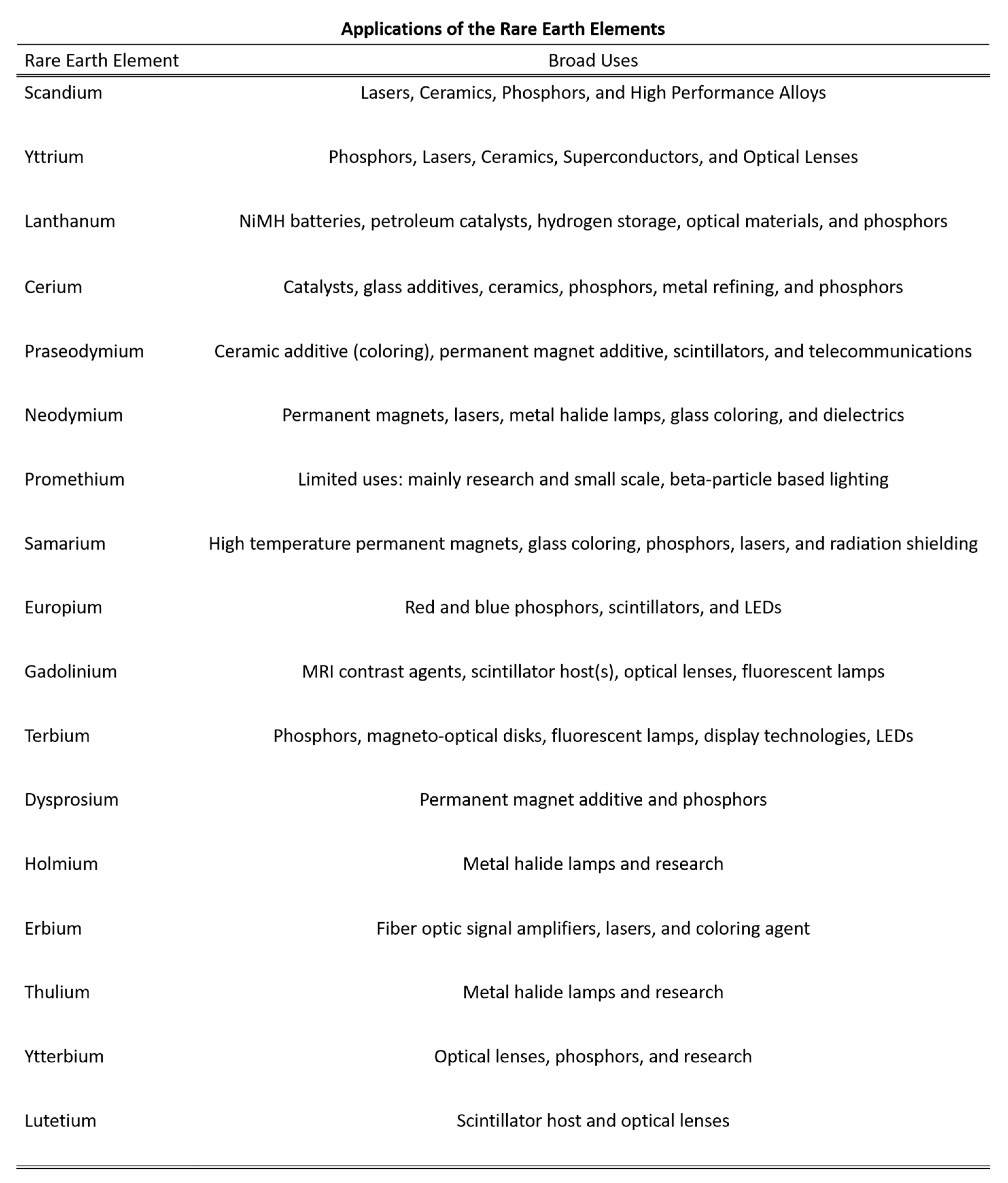

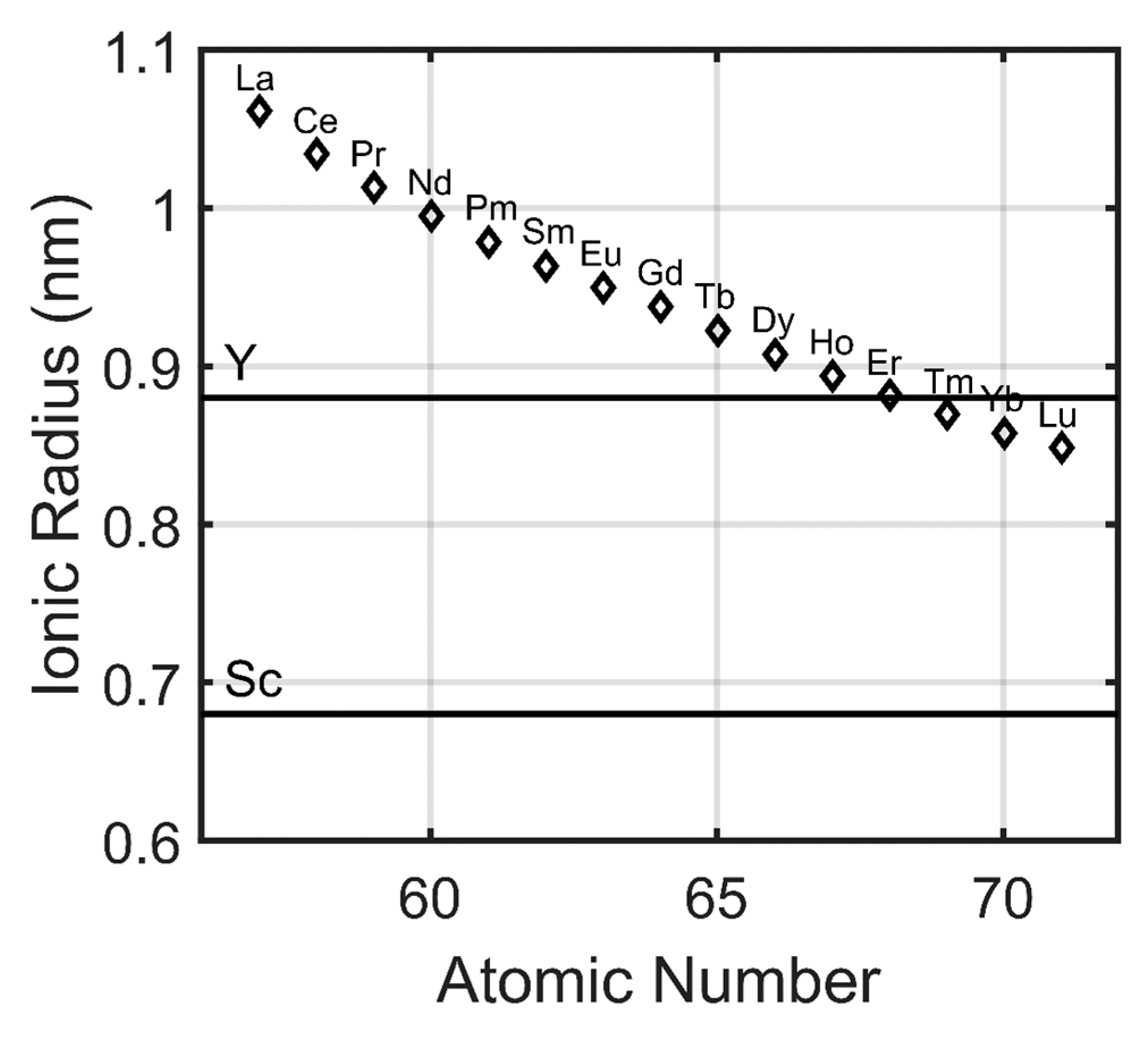
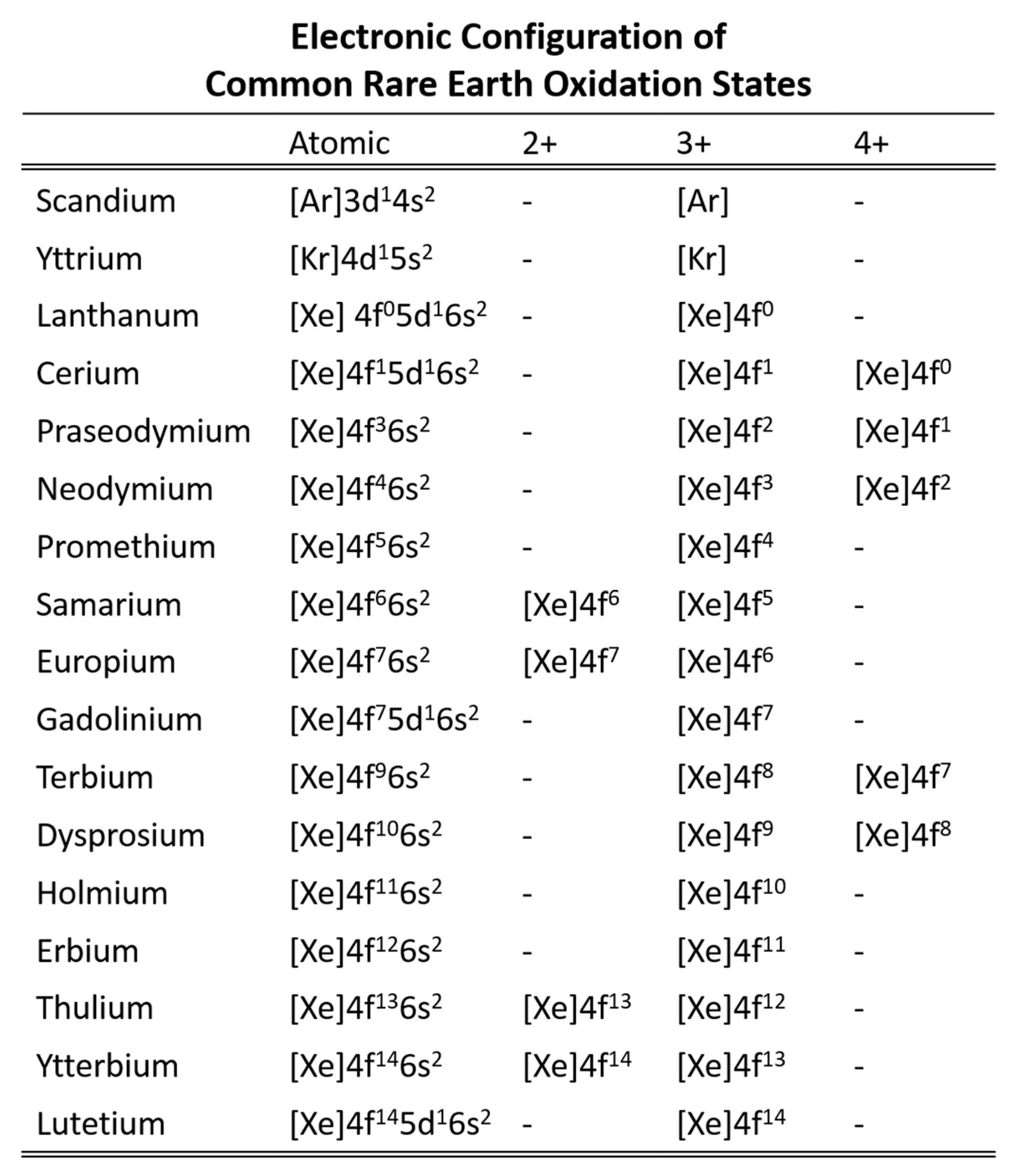

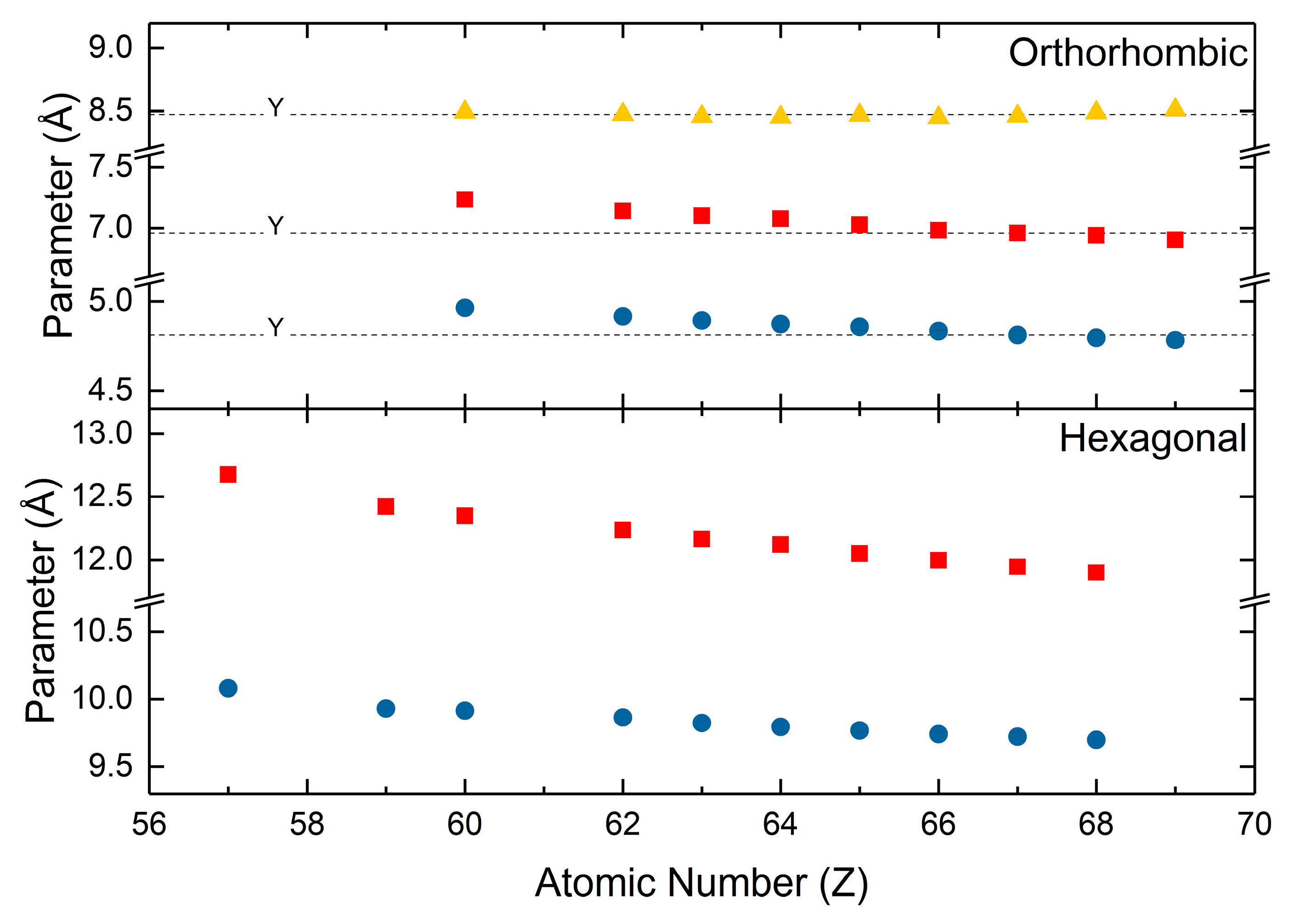
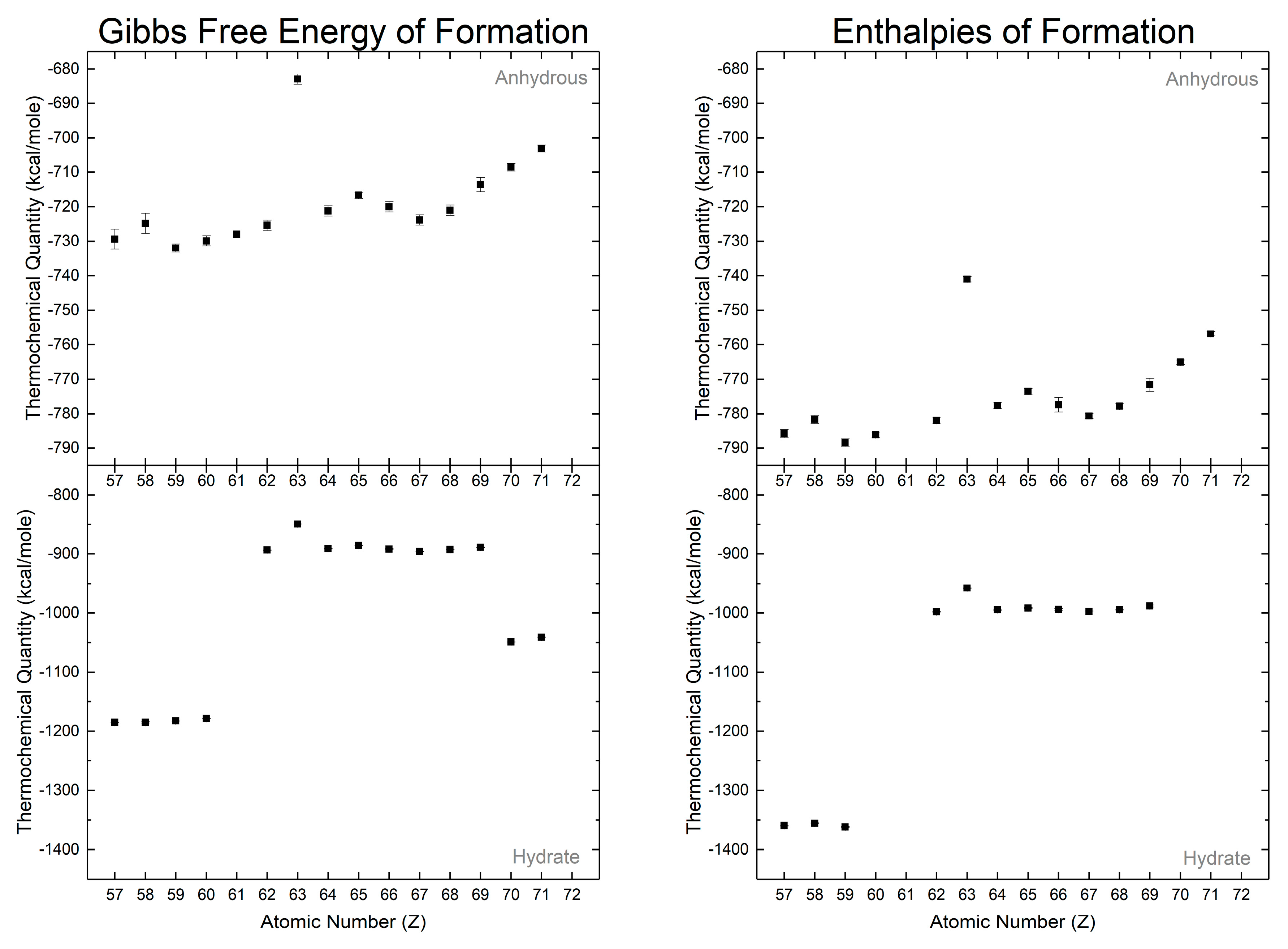

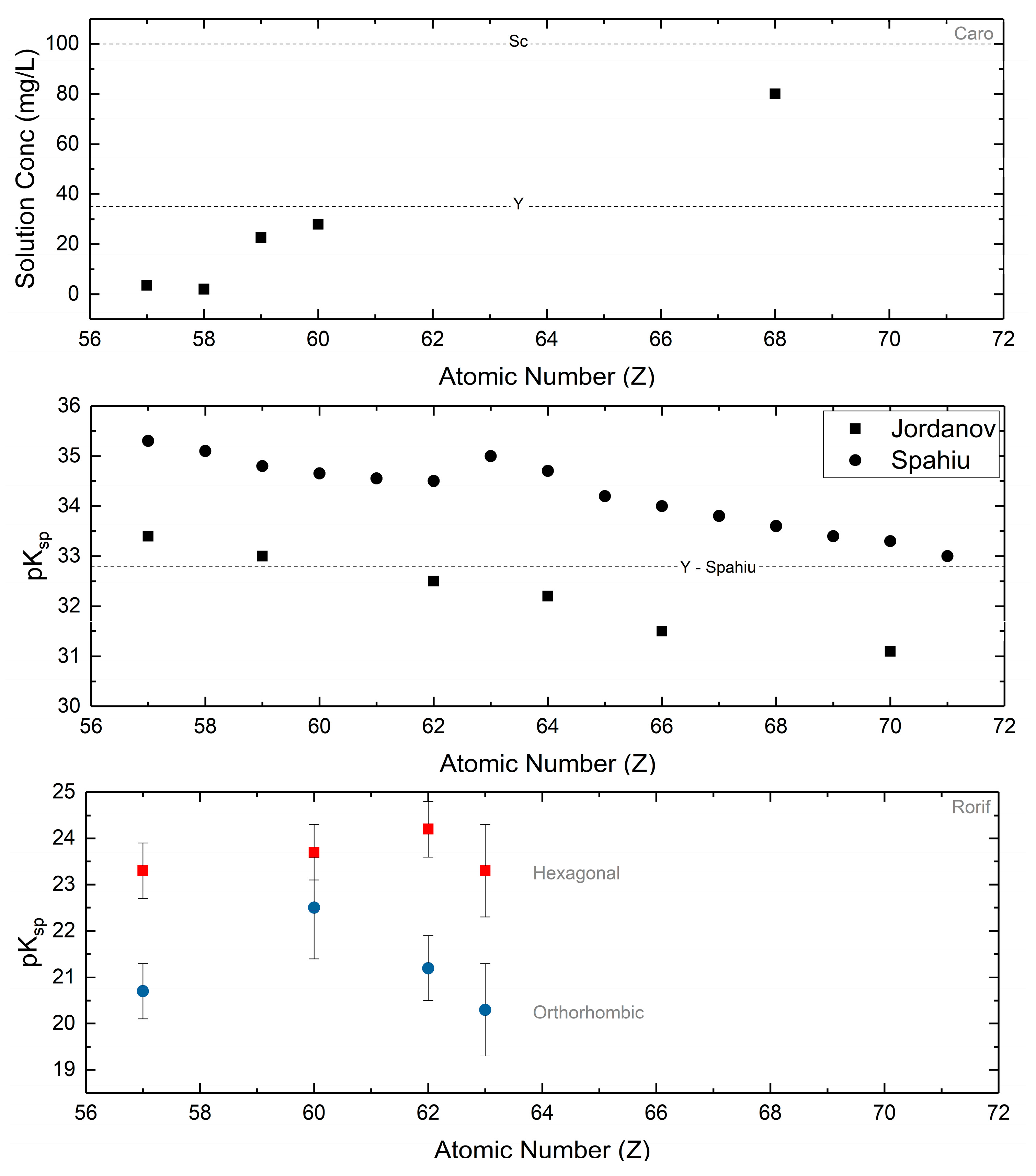
© 2018 by the authors. Licensee MDPI, Basel, Switzerland. This article is an open access article distributed under the terms and conditions of the Creative Commons Attribution (CC BY) license (http://creativecommons.org/licenses/by/4.0/).
Share and Cite
Kim, P.; Anderko, A.; Navrotsky, A.; Riman, R.E. Trends in Structure and Thermodynamic Properties of Normal Rare Earth Carbonates and Rare Earth Hydroxycarbonates. Minerals 2018, 8, 106. https://doi.org/10.3390/min8030106
Kim P, Anderko A, Navrotsky A, Riman RE. Trends in Structure and Thermodynamic Properties of Normal Rare Earth Carbonates and Rare Earth Hydroxycarbonates. Minerals. 2018; 8(3):106. https://doi.org/10.3390/min8030106
Chicago/Turabian StyleKim, Paul, Andre Anderko, Alexandra Navrotsky, and Richard E. Riman. 2018. "Trends in Structure and Thermodynamic Properties of Normal Rare Earth Carbonates and Rare Earth Hydroxycarbonates" Minerals 8, no. 3: 106. https://doi.org/10.3390/min8030106




